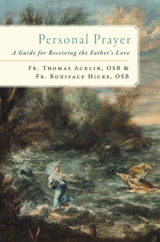By Regis Flaherty
Regis Flaherty is a bestselling author of several books, including Jesus Is the Gift: The Spirituality of Advent & Christmas.

Imagine a young woman who is not very athletic but who sees value in being involved in competitive sports. So, every fall she trains for cross-country races. She exercises and eats the right diet for a runner. She closely follows the directions of her coach.
Initially, she isn’t very good. But practice and training help her improve. Each year she begins a new season, and each year she is better than the previous one. By the time she is a high school senior, she qualifies to run in the state championship.
That young woman’s experience is similar to that of many dedicated Catholics who engage in a kind of spiritual athletics. Every year the Church provides them the season of Lent as a time of spiritual training through penance and renewal.
In one sense, Lent is the same routine each year: forty days, fasting and abstinence, more time in church, increased devotion, and almsgiving. But there’s a good reason why we have to repeat the discipline annually: Catholics are not one-season wonders! Saint Paul tells us that we are in a race (see 1 Cor 9:24 and 2 Tim 4:7) and we compete for a prize in Christ Jesus (see Phil 3:14). To be a winning athlete takes time, effort, and dedication: “Every athlete exercises self-control in all things. They do it to receive a perishable wreath, but we an imperishable” (1 Cor 9:25).
Lent is an intense period of training. That’s not to say that the Catholic isn’t striving to “stay in spiritual shape” during the rest of the liturgical year. It is to say that there is value in setting a specific period of time for a more concentrated effort of preparation. Lent is celebrated yearly because we need to keep striving for the “upward call” to be perfect even as Jesus is perfect. Reaching that goal is a lifelong task, but a yearly Lent can move an individual closer to the goal.
The Resurrection is the central tenet of the Catholic Faith. As Scripture declares: “If Christ has not been raised, then our preaching is in vain and your faith is in vain” (1 Cor 15:14). Each Sunday since biblical times, the faithful gather for the Eucharist and to celebrate the Resurrection. Similarly, each Friday the faithful remember the death of Jesus. Thus, in the Catholic tradition, Sunday is a day of celebration, while Friday is a day of penance and fasting.
Eventually, as the liturgical calendar took shape, an annual celebration of Easter developed. This celebration did not replace the weekly celebration, but augmented it. In conjunction with the yearly celebration of Easter, the Church developed a yearly season of repentance and fasting to prepare for the celebration of the Resurrection.
Moses and the Israelites wandered for forty years in the desert as they prepared to enter the promised land of freedom and life (see Num 14:33–34). Jesus fasted for forty days prior to beginning His public ministry (see Luke 4: 1–14). Thus forty days became the standard for the Christian period of preparation.
Both the Old and New Testaments associate ashes with mourning and repentance (see, for example, Esther 4:1–3; Job 42:6; Ps 102:9; and Matt 11:21). Thus Lent begins with the celebration of Ash Wednesday. After the Gospel reading and the homily on this day, the priest blesses ashes with holy water and a prayer. He then invites those in attendance to come forward and receive these ashes on their foreheads.
Like a splash of cold water to the face to awaken a person at the beginning of a new day, ashes on the forehead are to awaken the recipient to the beginning of a new season in the Church’s liturgical year. These ashes are produced by burning palm branches from the previous year’s Palm Sunday celebration; in this way, the year has come full cycle. It is once again time to examine oneself and prepare for a new Easter.
When administering the ashes, the priest or deacon can use two formulae of words. “Turn away from sin and be faithful to the Gospel” is the message of Lent. “Remember, man, you are dust, and to dust you will return” impresses upon the recipient that now is the time to act, now is the time to get right with God.
You Might Also Like

Prayer is at the heart of the Christian life. Given that we are weak and even sinful human beings, how can it be that God has anything to do with us? What does it mean to have a personal relationship with God? Why is God so silent and hidden? How do we grow in prayer? Personal Prayer: A Guide for Receiving the Father’s Love brings the depth of human experience together with the Catholic tradition of prayer to present the path to an intimate and vulnerable relationship with God.